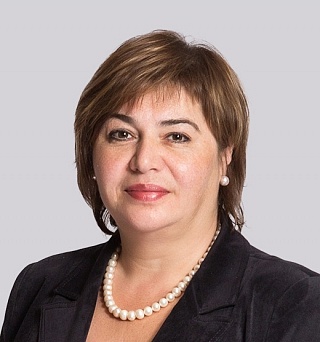Current practice of patenting new crystalline forms of biologically active compounds in the Russian Federation
25 September 2023A patent in the Russian Federation can be obtained both in accordance with the national patent legislation in the Federal Service for Intellectual Property (Rospatent), or/and in accordance with the Eurasian patent legislation in the Eurasian Patent Office (EAPO).
Obtaining a patent for such inventions as a group of compounds, an individual chemical compound, or salts, esters, isomers thereof, as well as crystalline forms of the compound became possible in 1991 with the entry into force of the USSR Patent Law.
Until recently, the requirements and approaches for the examination of such inventions, in particular crystalline forms, were the same for national and Eurasian applications and were harmonized with many other jurisdictions.
The crystalline form of a compound in comparison with its amorphous form, as a rule, has a number of physicochemical properties providing it with certain advantages that make it possible to obtain, store, and use the drug more efficiently.
However, obtaining the crystalline form of a biologically active substance, both the first and subsequent, is a complex process with unpredictable results. Despite the fact that various methods of obtaining crystals are generally known, due to the many factors affecting the formation of a crystal and its growth, knowledge of the state of the art does not allow the inventor to predict in advance with confidence not only the conditions of obtaining a crystal, but even the possibility of formation of the crystal of a particular compound, not to mention physicochemical properties of the resulting crystalline form.
Such principle was adhered to by Rospatent when examining inventions related to the crystalline forms of known compounds. The same is also adhered to by the EAPO up to date.
To obtain a national patent in Russia for the crystalline form of a known compound, it was previously sufficient to indicate and confirm that the crystalline form is new and has some improved properties, such as solubility, non-hygroscopicity, stability, etc., compared with the known crystalline form(s) or amorphous form of the compound.
Such information is still sufficient for obtaining a patent for a new crystalline form for the Eurasian application.
Rospatent’s approach has changed dramatically with the introduction of the following regulations in 2021 for some inventions:
Item 83 of the Rules:
Not to be recognized as conforming to the condition of the inventive step, inventions which in particular are based on:
- the creation of a chemical compound that is a form of a known chemical compound (in particular, isomer, stereoisomer, enantiomer, amorphous or crystalline form) or its derivative (in particular, a salt, solvate, hydrate, complex compound or ester), if such compound does not
exhibit new qualitative or quantitative properties in comparison with known compound, which are not obvious for a specialist explicitly from the state of the art.
Item 55 (6) of the Requirements:
To confirm the possibility of implementing an invention related to a substance, the following information is provided:
6) if the invention relates to a chemical compound that is a form of a known chemical compound (in particular, an isomer, stereoisomer, enantiomer, amorphous or crystalline form) or its derivatives (in particular, salt, solvate, hydrate, complex compound or ester), then information is provided about its new qualitative or quantitative properties in comparison with known compound, which are not obvious for a specialist explicitly from the state of the art as well as the data reliably confirming such new properties.
As can be seen, the additions introduced relate to the need to identify new properties for the forms or derivatives of the compound in comparison with properties known for the compound that do not follow explicitly from the state of the art for a specialist.
Thus, in essence, the regulations were supplemented by the requirements for the listed subjects of the invention, which were actually applied by Rospatent when evaluating the inventive step thereof.
It is quite obvious that the amended regulations do not limit new qualitative and quantitative properties, of the new crystal form, which ensures that this form corresponds to the inventive step. Therefore, the amendments made suggest that the crystalline form of the compound may have any new properties related to both biological activity and physicochemical properties of the crystalline form, such as stability, nonhygro- scopicity, solubility, uniform particle size distribution, etc.
Consequently, said amendment in the regulations allow the applicant to provide data confirming those properties that were discovered and declared by the applicant in the description of the application as a technical result achieved during the implementation of the invention.
However, the current practice of Rospatent shows that, apparently, the introduction of the above requirements was used by Rospatent to tighten the requirements for establishing the patentability of crystalline forms, which in essence led to the termination of granting patents for inventions related to new crystalline forms of known compounds.
Despite the absence of any grounds in the amended requirements, Rospatent believes that the new crystalline form of a biologically active compound, both the first and subsequent, can be recognized as having the inventive step only if it has unexpectedly improved biological activity compared to the known non-crystalline and/or crystalline form of the compound.
As for other new improved and non-obvious properties of the new crystal form, namely, physicochemical properties, from the point of view of Rospatent, such properties are obvious to a specialist in the art.
Common arguments and conclusions of Rospatent experts used to deny the inventive step of new crystal forms are the following:
- It is well known that the crystalline forms of compounds are obtained in order to improve various physico-chemical properties, for example, stability, solubility, hygroscopicity, etc.;
- The state of the art discloses the general principles and methods for obtaining polymorphs with the necessary characteristics;
- The discovery of a new form of a known compound with a known activity is not sufficient for such form to meet of the inventive step patentability condition;
- Improvement of stability, solubility, bioavailability, non-hygroscopicity and others cannot be recognized as an unexpected technical result for a new crystalline form;
- There is no data in the application materials confirming the achievement of an unexpected technical result in terms of treatment when using the claimed crystalline form;
- An invention based on the choice of optimal or operating values of parameters is not recognized as conforming to the condition of the inventive step, if the influence of these parameters on the technical result is known, and if the choice can be made by the usual trial and error method or by using conventional technological methods.
Thus, Rospatent believes that no technical results for a new crystalline form, apart from improved biological activity/therapeutic effect, can serve as a basis for recognizing its inventive step due to the fact that general methods for obtaining crystals are known and it is obvious to the specialist that: crystalline form of the compound might have improved physicochemical properties, how to obtain new crystal forms with the expected improved physicochemical properties, which, in fact, deprives such an invention of the inventive step.
The absence of experimental data confirming the improved biological activity/therapeutic effect of the new crystalline form in the application materials on the date of its filing with Rospatent may serve as a serious obstacle to obtaining a patent. The submission of such data during the examination of the application (which is allowed by national legislation) is currently considered by Rospatent as an “indication of the technical result that is provided by the invention and is not related to the technical result disclosed in the original application documents”. As a result, such data is often rejected by Rospatent, even though the relationship of biological activity/therapeutic effect with biological availability and solubility is obvious to a specialist.
At the same time, the process of obtaining a new crystalline form is recognized by Rospatent as an invention having an inventive step.
The current position of Rospatent has led to that, starting from the middle of 2021, the issuance of patents for inventions related to new crystalline forms of compounds, hydrates, solvates, cocrystals, has essentially ceased.
At the moment, the Chamber of Patent Disputes of Rospatent (CPD)/which is the first (administrative) instance for considering appeals against Rospatent’s decisions, fully supports Rospatent’s position and none of the appeals filed against decisions to refuse to grant patents for new crystalline forms of a known compound has been satisfied by CPD at the moment.
A certain optimism is caused by the position of the Intellectual Property Rights Court (IPC) and the IPC Presidium, which clearly disagree with Rospatent’s position on the discussed issue, which is reflected in the decisions that have entered into force at the moment on several appeals against the decisions of the Rospatent (CPD) on the retention of Rospatent’s decisions on crystalline forms. However, since the consideration of appeals is still ongoing in the IPC, it is too early to judge the prospects for patent protection of crystalline forms in Rospatent.
It should be noted that to date, the position of the EAPO with respect to the inventions relating to crystalline forms differs significantly from the current position of Rospatent. The EAPO issues patents for new crystalline forms of known biologically active compounds that exhibit any properties improved in comparison with that of the previously known form/forms of the compound.
Thus, when deciding to file a new application in Russia for an invention directed to a new crystalline form of a known compound, the applicant should carefully consider the choice of patenting procedure, taking into account the fact that without experimental data in the application materials contained on the date of its filing, confirming the improved biological activity/therapeutic effect of the new crystalline form in comparison with that of the known forms of the compound, obtaining a patent for a crystalline form in Rospatent is not guaranteed.
If an application for a new crystalline form has already been filed with Rospatent, taking into account the current position of Rospatent regarding the patentability of new crystalline forms, behind which, in fact, the goal is to terminate the issuance of national patents for crystalline forms, as well as, in light of the pending proceedings currently taking place in the CPD and IPC on applications related to crystalline forms, the main recommendation for the applicant may be to maintain the application in Rospatent in force. This can be done, in particular, by submitting a division application(s) in anticipation of a possible change in the position and practice of Rospatent.
To access this website, we request that you read and accept the Terms of Use.











